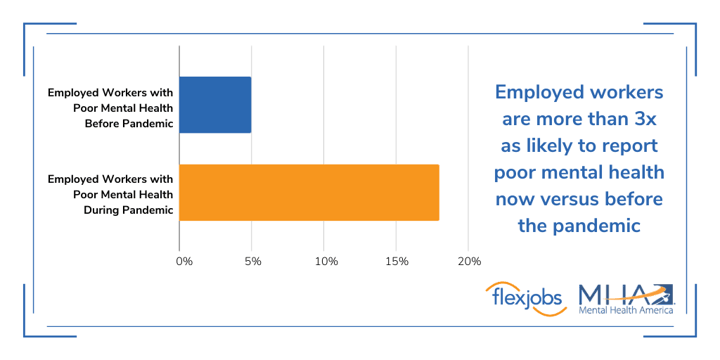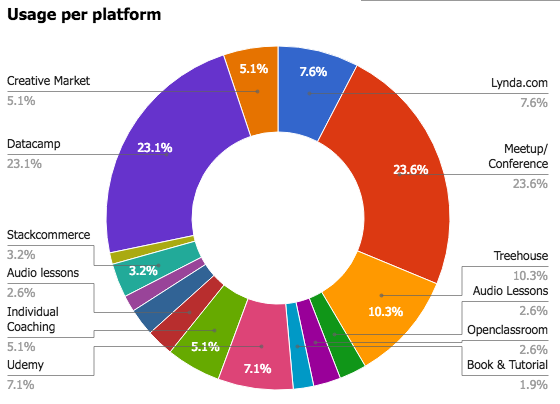Employee engagement is a timeless priority for any business and when companies are able to get it right, the positive impact echoes across the whole organization.
In the past, developing and sustaining employee engagement has been about ensuring that people at your company felt secure in their jobs, supported by their managers, and connected to your company's goals and vision - and doing all of that within the walls of your workplace. While that hasn’t changed, employee engagement now must adapt to the most significant shift in the workplace that’s happened in our generation: the global COVID-19 pandemic.
Not only has the pandemic changed employees’ need for security and support from their employers, but it has also quite literally transformed the definition of what a workplace looks and feels like going into the future. It’s now up to people leaders to pivot their employee engagement strategies to take care of employees in this new world of work.
In this article, we’ll dive into 5 of the biggest employee engagement trends that every HR leader should stay on top of in the coming year.
“Organizations are going to be judged on how we treat our people right now.” - Andrew Shatte of meQuilibrium
5 employee engagement trends for 2021
1. Remote work
It would be impossible to talk about the current picture of employee engagement without talking about remote work and the need for HR leaders to support employees who are working from home. In light of the pandemic, many companies who have never had a remote work model - and also ones that perhaps did, but never thought they’d need to rely so heavily on it - were forced to uproot their in-office cultures and adapt to a completely dispersed workforce. In total, an estimated 16 million U.S. knowledge workers started working remotely due to COVID-19 as of March 27; that number is certainly much higher now.

Introducing mandatory remote work to employees who aren’t accustomed to it, which happened across so many companies this year (and maybe yours too), creates a very challenging situation for employee engagement. Those challenges include:
- Employees struggling to adapt to new and unfamiliar ways of working
- Unforeseen communication, technology, and coordination challenges that impact productivity
- Increased feelings of emotional disconnect from one's own work and from others in the company
Collaboration tools have somewhat helped alleviate these remote work challenges and so has time and familiarity with working remote as a new norm. The reality, though, is that just adding collaboration tools and letting your employees “get used to it” isn’t going to be enough in the long-term if remote work is here to stay. And we already know that it is for a large majority of employers: in a recent Predictive Index study of CEOs across a variety of industries, 76% plan to allow remote work on a full-time basis “for all or most employees”, while 97% will allow remote work in some form moving forward.

To improve employee engagement especially as employees continue to work remotely, people leaders ought to put thought and effort into rolling out employee engagement activities and initiatives for remote workers that specifically address isolation and that encourage interaction and emotional connection among team members.
What would also be meaningful is to offer employees a flexible remote work stipend that gives them the ability to choose the type of remote work support that’s most useful for them - whether it’s technology and equipment-related or more geared towards things like a meal allowance or their health and wellness.
And lastly, if you haven’t developed a plan to communicate what your people can expect as far as the future of working remote or your long-term remote plans, it’s likely this is adding to stress and burnout. A communication plan around what the future holds for them can help ease their fears, and let them know that you’re not just on-top-of the situation but also thinking about them and their needs.
2. Employee Burnout
The sharp rise of remote work and the blurring line between work life and home life has given way to more and more employees feeling overworked and overstressed, while also feeling less connection to and productivity in their work. This translates to employee burnout, which is a huge employee engagement trend and challenge for people leaders to address going into 2021.
While burnout is one of the five trends we’re talking about, it’s one that’s particularly top-of-mind for company leaders due to how widespread it is and its direct connection to productivity - and therefore, profitability.
A recent study by FlexJobs and Mental Health America (MHA) showed that 75% of workers have experienced burnout this year, with 40% saying they’ve experienced burnout specifically during the pandemic.

What are some ways people leaders can address burnout?
For one, take a close look at “logged in” hours your team members are averaging and whether there’s a pattern (or expectation) of after-hour and / or overtime work that you need to call out and create guidelines to prevent.
Another way to remedy employee burnout is by giving your employees a means and opportunity to decompress. One great example comes from Google: Google gives its employees “No Meetings Weeks” that, according to Google CEO Sundar Pichai’s memo, is meant to “create space for Googlers to either focus on independent work, or make it easier to switch off entirely”.
Yet another option would be to design a perk program where your company covers your employees’ costs up to a certain amount so that they can regularly treat themselves to whatever it is they need to combat their burnout at work, whether that’s a mediation app, a babysitter, a few good books, a staycation or whatever else they choose.
A personal favorite way to address burnout is to write down your team’s unwritten rules. Writing these down will let people know the unwritten rules to what behavior is okay. For example, is it okay to turn off their video camera if they’re experiencing Zoom fatigue and how will they know, or if it’s okay to step away from the desk, and for how long, if they need some fresh air.
3. Diversity & Inclusion
The need for diversity and inclusion has always existed in the workplace and studies have repeatedly confirmed that diverse teams are smarter and perform better, and that inclusive companies are more innovative and tend to be more profitable. But diversity and inclusion has reached a pivotal moment of importance in relation to employee engagement in these times because of two main reasons:
- Employees today care deeply about whether the company they work for is inclusive and fosters a culture of belonging for everyone
- Companies can’t hide unfair or exclusionary business practices for very long nowadays: social media and the internet make it virtually impossible
To promote and support diversity and inclusion in a way that positively impacts employee engagement, the #1 thing companies should do is to become great listeners. Give your employees as many opportunities you can to tell you what’s important to them and then - and this is important - actually put their feedback into action through programs that make a real difference for them on an individual level, such as employee engagement initiatives or a custom perk program that will offer something for everyone.
For example, Buffer offers a $20/month learning and development stipend that their employees are able to spend on an extremely diverse set of categories that include everyone's learning and development needs.

4. Recognition
We’re all human beings that are wired to crave acknowledgement for our efforts. And while HR leaders already know how important acknowledgement and recognition is for employees in the workplace, many companies were struggling with employee recognition long before the pandemic.
Now that employees are no longer regularly gathered in an office where spontaneous “rewards” helped fill the recognition gap (think: a pat on the back, a high-five, a simple verbal “thank you” or any other spontaneous gesture of thanks), employee recognition has now become a higher priority - and a bigger challenge - for employee engagement.
To improve employee recognition at your company, think about structured programs to acknowledge individual employees’ accomplishments that isn’t one-size-fits-all and isn’t just about money. Studies show that the most effective recognition is honest, authentic and individualized to how each employee wants to be recognized, and typically falls under any one of these six methods:
- public recognition or acknowledgment via an award, certificate or commendation
- private recognition from a boss, peer or customer
- receiving or obtaining a high level of achievement through evaluations or reviews
- promotion or increase in scope of work or responsibility to show trust
- monetary award such as a trip, bonus, prize or pay increase
- personal satisfaction or pride in work
5. Health and wellness
While we’ve touched upon the topic of health in talking about employee burnout a few sections back, health and wellness is a massive employee engagement trend that’s worth exploring more deeply since it’s both complex and extremely relevant for this year and beyond.
Just think: a major worldwide health crisis, ongoing disruption and inaccessibility of physical activities and travel, personal loss and a persisting state of uncertainty, these are all things that have been introduced to employees’ lives this year that have unavoidable consequences to their health and wellness.
41% of American adults have struggled with mental health issues stemming from the COVID-19 pandemic and that doesn’t account for the long-term ripple effect that’s yet to be seen. And as for physical health, it can be perfectly summed up in this sentence: sedentary pandemic life is bad for our happiness.
What this means for your organization is that your employees need more support for their health and wellness, even if they don’t come right out and tell you that.
One of the best ways to give them that support is to give them an open invitation - and budget or allowance - to choose what health and wellness means to them. Whether it’s a meditation app, therapy consultation, running shoes, exercise equipment, meal delivery or anything else, giving your employees flexibility and autonomy over their health and wellness needs will make a difference in their employee engagement.
Key Takeaways
Every business absolutely needs employees to function, but if those employees aren’t engaged then the chances of true long-term success is at risk. For that reason, people leaders can't afford to ignore employee engagement if they want the best productivity and performance results from their valued employees.
By staying on top of these five employee engagement trends, people leaders and their companies will benefit from happier and more fulfilled team members who’ll be able to keep giving their best even when the times are tough.
Compt is the #1 employee stipends platform that gives your people the freedom to choose the lifestyle perks that are best for them and their always evolving needs, even when remote. Interested in learning how Compt might benefit your company? Consult with our team or request a demo.
